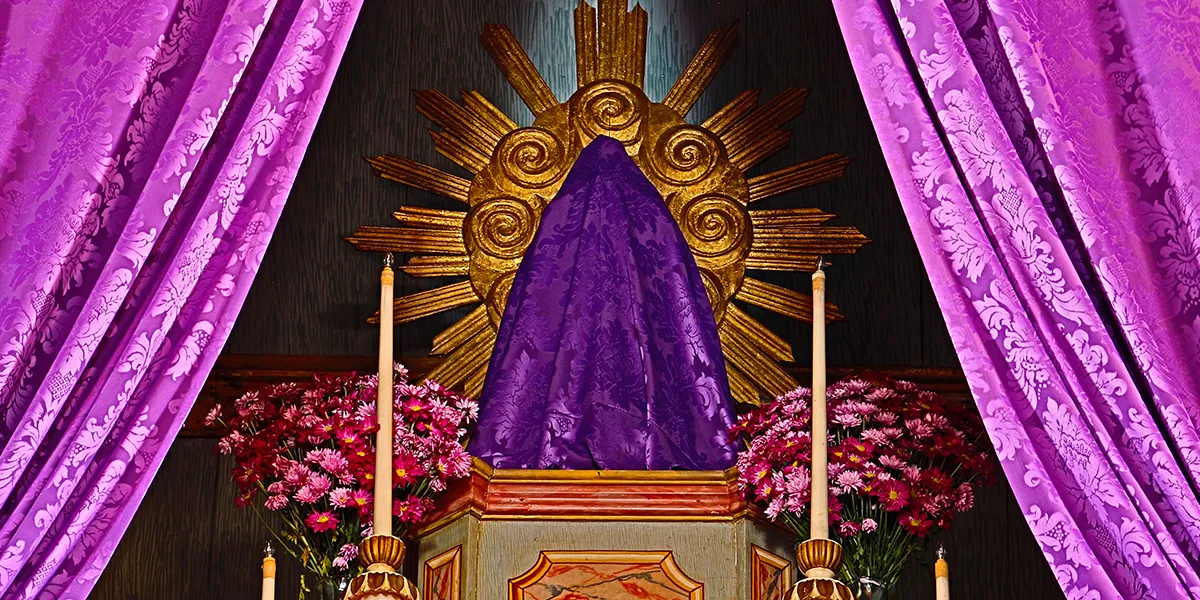Introduction:
During the season of Lent, observant Catholics may notice a distinct change in their churches: statues and paintings, typically adorned with vibrant colors and intricate details, are often veiled or covered. This practice, while seemingly simple, carries profound symbolism and spiritual significance within Catholic tradition. In this article, we explore the reasons behind the custom of covering statues and paintings during Lent, delving into its historical roots and theological meanings.
Focusing on the Essentials:
Lent is a period of reflection, repentance, and preparation for the celebration of Easter, the central event of the Christian faith. By veiling statues and paintings, Catholics symbolically strip away distractions and external adornments, directing their attention inward towards the essential aspects of their faith journey.
During Lent, believers are called to engage in prayer, fasting, and almsgiving, seeking spiritual renewal and deeper intimacy with God. The covering of statues and paintings serves as a visual reminder of the need for interior reflection and detachment from worldly distractions, facilitating a more profound encounter with the mysteries of faith.
Embracing a Season of Penitence:
In Catholic tradition, Lent is a time of penitential discipline, modeled after Jesus’ forty days of fasting and temptation in the desert. The act of covering statues and paintings reflects the somber mood of this season, acknowledging the reality of sin and the need for repentance.
By veiling sacred images, Catholics enter into a spirit of penance and humility, recognizing their own imperfections and the brokenness of the world. This practice invites believers to confront their sins, seek reconciliation, and turn their hearts more fully towards God’s mercy and grace.
Reflecting on the Paschal Mystery:
The veiling of statues and paintings also serves to heighten anticipation for the celebration of Christ’s passion, death, and resurrection during Holy Week and Easter. Just as the darkness of Good Friday gives way to the light of Easter Sunday, so too does the covering of sacred images give way to their unveiling in celebration of Christ’s triumph over sin and death.
This symbolic gesture invites Catholics to journey with Christ through the mysteries of his suffering and redemption, contemplating the profound love revealed on the cross. The unveiling of statues and paintings on Easter Sunday serves as a joyful proclamation of Christ’s victory and the promise of new life in him.
Conclusion:
The custom of covering statues and paintings during Lent is a rich tradition that invites Catholics to enter more deeply into the spiritual rhythms of the liturgical year. By veiling sacred images, believers are reminded of the call to interior reflection, penitential discipline, and joyful anticipation of Christ’s resurrection.
As Catholics journey through the season of Lent, the practice of covering statues and paintings serves as a tangible expression of faith, drawing them closer to the heart of the Gospel and the transformative power of Christ’s love.
